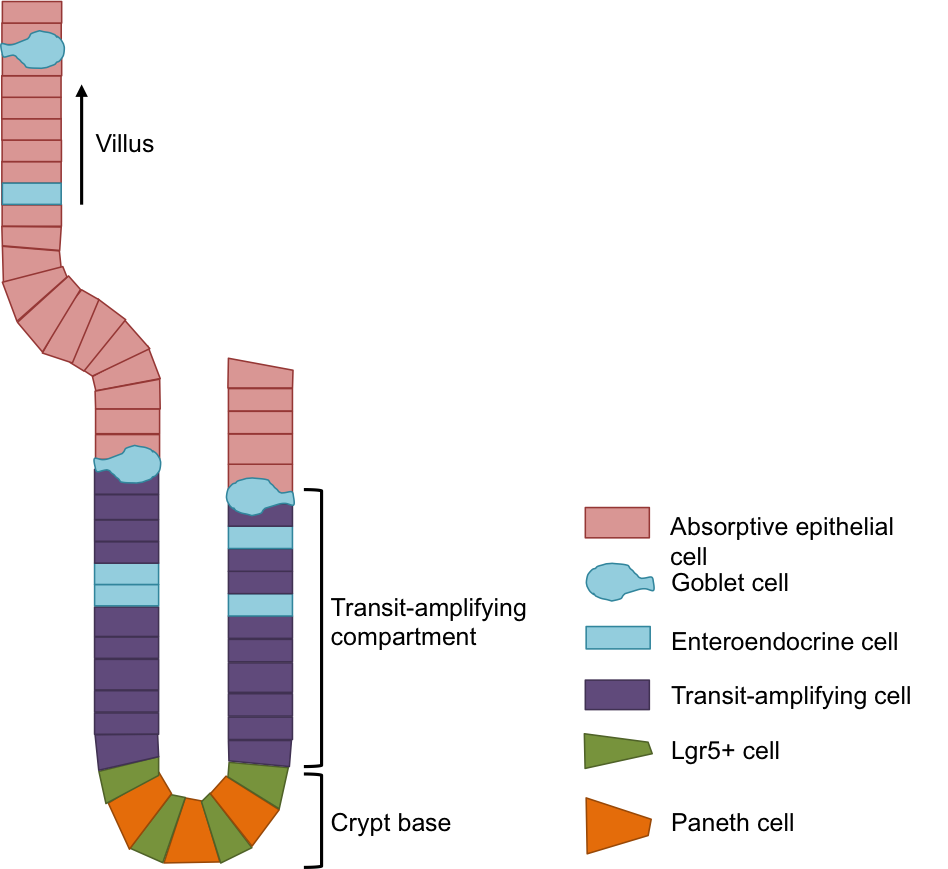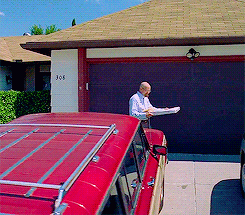10 Hot Tips To Make Your Lab Data Look Spooky For Halloween
Originally published on the satire science journal website DNAtured
Think your regular data isn’t scary enough for Halloween? Try these tips to put the “ahhhh!” in your analysis!
1. Ghostian Curves
Casper is no longer the cutest ghost in town! Draw eyes on a Gaussian distribution curve to make yourself a spooky lil’ ghost.

2. Haunted P-Values
You think a p-value of 0.08 is scarily insignificant? Turn your calculator upside down for another scare: BOO

3. Zombie Survival Curves
Night of the living dead? Night of the living rats! Turn those survival curves upside down – or back up – by summoning your test subjects black to life with some Michael Jackson in the background!

4. Witching Hour Gel Electrophoresis
Want some Wicked-ly good pictures? Add a splash of green fluorescent protein to make your image light up like slimy goo!

5. Bloody Western Blots
Messed up your assay and now you have a smeared Western blot? No problem! It looks just like smeared blood! The horror!

6. Coffin Plots
Don’t ever let anyone say your box plots are boring… Get your spook on and turn them into coffins!

7. Scary scatter plots
Need more spooky plots? Turn your scatter plots into any scary shape: a witch’s hat, a jack o’ lantern, a spider web, or a bat! All you need to do is get rid of those terrifying outliers!

8. Beastly n-Values
666 summons the devil, so if you have three experimental conditions, make sure your sample number is n=6 for each!

9. Black & Orange Graphs
As a last resort, colour code your excel sheet with some spooky colors, we recommend methyl orange. As if using excel for data handling isn’t scary enough, you monster!

10. Dangerous Data Storage Systems
And if nothing else works, live on the edge with the scariest lab data of all: stored on an old, barely functional computer that runs on Windows 94 and hasn’t been backed up in decades!

Whoops! Recent Graduate Realizes That Having A PhD Does Not Make Someone Employable
Originally published on the satire science journal website DNAtured

A recent grad student, who has asked to remain anonymous as to not influence their perspective chances at finding a job, has come to the unfortunate realization that having a PhD does not make them automatically employable.
“I was told during an interview last week that I was overqualified,” complained the student. “But in the next sentence, they said I didn’t have enough experience. How can it be both?”
Tragically, like many other prospective PhDs, the student thought that having a plethora of knowledge in a niche scientific area would be applicable outside academia.
“In today’s day and age, we are looking for candidates who can thrive in interdisciplinary teams,” Ms. Laurie Durham, Senior Recruiter at Biotech Intl., “not people who can recite the base pairs that code for the angiotensin-converting enzyme within one minute.”
“I can do that, but at this point, it’s basically just a party trick” confirmed the grad student. “When I started listing them off in my interview, the recruiter just looked at me in confusion.”
For other recent graduates concerned about running into the same problem, resume experts suggest adding “soft skills” to your resume. Being able to distinguish blobby lines and gather meaningful blot information, being able to turn hours of “data analysis” into doom scrolling, and being able to convince your supervisor that you need three more weeks to finish a powerpoint presentation are, in fact, very transferable to work life.
Aww! Nobel Prize Winner Thanks Post-Docs For Generously Allowing Him To Take Credit For Their Discovery
Originally published on the satire science journal website DNAtured

Editor’s note: to protect the identity and avoid embarrassment for the people involved, we have retracted the name and field of the Laureate – though if you were assuming it was a man, you’d be right. Not that it narrows the possibilities by much.
Academics around the world are applauding a recent Nobel Laureate for remembering to thank his overworked post-doctoral students after their discovery helped him win the notorious award.
A leaked draft of the Nobel Laureate’s acceptance speech revealed some open secrets about his true feelings toward his underlings, which many have described as “out of touch.”. The full draft reads:
“I am truly thrilled and honored to receive this prestigious award all by myself, with no co-winners. I would like to thank the Nobel Prize committee for continuing the decade-long tradition of giving this prize to a man, the obviously bigger-brained of the sexes.”
“I suppose I should thank all the people who made this possible, including the many researchers before me who laid the groundwork for this science, but it’s not my fault that I simply did it better (neener neener)! “
“I’d like to thank my undergraduate minions who have worked endless hours in the lab for experience and no pay, my grad students who have given up their chance of any personal relationship to make this research a success, and finally, my post-docs who have generously allowed me to take credit for years of their work.”
“I hope all the members of my lab are equally as thankful for the prestige of working in the lab of a Nobel Prize Winner!
Since my graduate students will benefit tremendously from the increased status this award brings to the lab, I trust that they will understand when I cut their graduate stipends by 50%.”
Grad Student Becomes Lab’s Go-To Graphic Designer After Making Half-Decent Image In Powerpoint
Originally published on the satire science journal website DNAtured

Grad student Anna Esquivel’s duties, which already include carrying out her research project, managing the lab, and TAing twice a week, have now expanded to include creating all poster and presentation images for her group after she created a half-decent image of a protein for a lab meeting.
“It was so amazing to see,” said Dr. Lyndon Vang, a postdoc in the same lab as Anna who attended the lab meeting in question. “The Prof was incredibly impressed by Anna’s ability to turn the standard shapes available in Powerpoint to an adequate representation of a protein. You should have seen the Prof’s face when the animation started!”
Anna has now been tasked to create all the images that the lab will use for all future talks, posters, and publications – including a (virtual) poster presentation that Dr. Vang’s due to present tomorrow. “Good thing I have Anna to help me,” Dr. Vang says. “So far, all I have is a title and half an abstract.”
Jadine Sparks, another grad student in the same lab, is an aspiring science illustrator. “It’s kind of frustrating; I’ve spent hours creating scientifically accurate figures in Adobe illustrator, both for scientific posters I’ve presented and to expand my portfolio – I want to make a career out of this. But apparently, all my figures look “too professional” for a scientific conference.”
Anna allegedly also knows how to do conditional conditioning in Excel, implying that soon she will also be designated the lab’s biostatistician.
Bonus: here’s an actual image I made in PowerPoint for my PhD theses. It took me embarrassingly long:

Grad Student Desperate For Feedback Thrilled To Receive “K.” From Supervisor After Just 3 Months
Originally published on the satire science journal website DNAtured
Fourth year graduate student Virinder Singh was excited to find a new email from his supervisor in his inbox last Friday at 11:13 PM. Responding to a three-month-old request for feedback on a first draft, his supervisor had sent the following message:
K.
Sent from my iPhone
“I was having a drink when I checked my phone and noticed a new email,” Singh says. “I immediately rushed back into the office to start getting back to work. It was then that I realized that Prof McNally had forgotten to include the attachment.”
Singh’s supervisor, Dr. Alistair McNally is known for his open door policy: students can come to him anytime with questions. The door to his office is always open. He, however, is never there.
Dr. Jena Li, a postdoc in Dr. McNally’s group, seemed disgruntled: “Good for Virinder, I hope he’s able to finish that paper. I’ve been waiting more than a year for a reply to an email asking for a meeting. I’m not even sure Dr. McNally knows I exist!”
When asked for a statement, Dr. McNally replied “K.”

Whoops! This Research Chemist Forgot To Add “But Not For Drugs” At The End Of Their Google Search And Now They’re On A Watch List
Originally published on the satire science journal website DNAtured

Research Chemist Dr. Jamie Dennis was shocked to discover that they were on the FBI watch list after googling the chemical structure of phenylalanine, without specifying that they did not intend to make meth.
“I’m usually so careful,” says Dr. Dennis. “One of the first lessons you learn in a chemistry undergrad course is to always, always, put “but not for drugs” in a google search. Especially if you’re looking at crystallization temperatures.”
This is not the first time a member of the chemistry department has been flagged. In 2015, a grad student was temporarily suspended bringing blue rock candy to an after-class happy hour.

“For the last decade or so, we’ve had to be a lot more careful,” said FBI Agent Susan Pearson. “We’ve put tabs on all chemistry teachers, chemistry grad students, and chemistry researchers, just to be safe. With those paltry teaching salaries, everyone wants to be the new Walter White.”
Dr. Dennis says that they’ve learned their lesson, but after comparing their postdoc stipend to the money that could be made from a few illegal synthesis reactions, says they will now simply complete future searches in Incognito mode.


